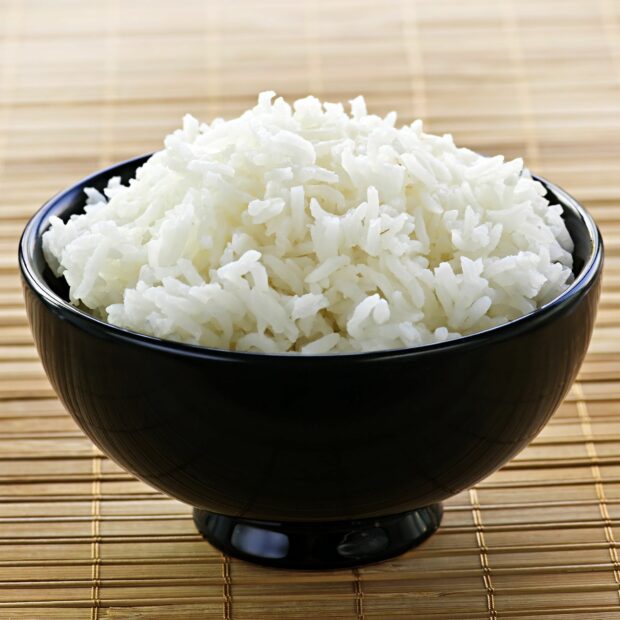Parboiled rice, also known as converted rice, is a type of rice that has been partially cooked in its husk before milling. This process involves soaking the rice, steaming it, and then drying it before removing the husk. The result is a nutritious and versatile grain that offers several benefits. In this comprehensive guide, we will explore the nutrition profile, benefits, and downsides of parboiled rice.
Nutrition Profile of Parboiled Rice:
- Parboiled rice is a good source of carbohydrates, providing energy for the body. It also contains some protein, dietary fiber, and a variety of essential vitamins and minerals. Here is a breakdown of the key nutrients found in parboiled rice:
- Carbohydrates: Parboiled rice is primarily composed of carbohydrates, which are the body’s main source of energy. It offers a moderate glycemic index, meaning it has a slower impact on blood sugar levels compared to white rice.
- Protein: While parboiled rice is not a significant source of protein compared to other grains, it still provides some essential amino acids. If you’re following a vegetarian or vegan diet, it’s important to combine parboiled rice with other plant-based protein sources to ensure adequate protein intake.
- Dietary Fiber: Parboiled rice contains a small amount of dietary fiber, which aids digestion and helps maintain bowel regularity. Fiber can also contribute to feelings of fullness and assist in weight management.
- Vitamins: Parboiled rice retains more vitamins and minerals compared to regular white rice due to the parboiling process. It contains B-vitamins such as thiamine (vitamin B1), niacin (vitamin B3), and vitamin B6. These vitamins play crucial roles in energy metabolism, brain function, and overall well-being.
- Minerals: Parboiled rice is a source of various minerals, including magnesium, phosphorus, and potassium. These minerals are essential for proper functioning of the body, such as maintaining bone health, regulating blood pressure, and supporting muscle function.
Benefits of Parboiled Rice:
- Retained Nutrients: The parboiling process used in the production of parboiled rice helps retain more nutrients compared to white rice. It preserves the vitamins and minerals found in the rice bran and germ, which are usually removed during the milling of white rice. As a result, parboiled rice offers a more nutritious alternative.
- Improved Digestive Health: The dietary fiber present in parboiled rice aids in promoting healthy digestion. It adds bulk to the stool and supports regular bowel movements, reducing the risk of constipation and other digestive issues. Including parboiled rice in your diet can help maintain a healthy digestive system.
- Lower Glycemic Index: Parboiled rice has a lower glycemic index compared to white rice. This means that it causes a slower and more gradual rise in blood sugar levels after a meal. This property can be beneficial for individuals with diabetes or those looking to manage their blood sugar levels.
- Versatility in Cooking: Parboiled rice retains its shape and texture during cooking, making it suitable for a wide range of dishes. It can be used in pilafs, stir-fries, salads, and various other recipes. Its firmness and ability to absorb flavors make it a popular choice for many cuisines worldwide.
Downsides of Parboiled Rice:
- Reduced Texture: Some people may find that parboiled rice has a slightly firmer texture compared to regular white rice. While this can be a desirable characteristic in certain dishes, it may not be preferred by those who enjoy softer and stickier rice varieties.
- Lower Fiber Content: Although parboiled rice contains dietary fiber, the amount is relatively low compared to other whole grains like brown rice or quinoa. If increasing fiber intake is a priority for you, other whole grain options might be more suitable.
- Potential Arsenic Content: Like other types of rice, parboiled rice can contain trace amounts of arsenic, a naturally occurring element found in soil and water. Arsenic levels in rice can vary depending on the cultivation methods and location. To reduce arsenic exposure, it is advisable to rinse parboiled rice thoroughly before cooking and cook it with a higher water-to-rice ratio, discarding the excess water afterward.
- Processing Concerns: The parboiling process used to produce parboiled rice involves soaking, steaming, and drying the rice before milling. Some individuals may prefer to consume less processed grains and opt for whole grain options like brown rice or wild rice.
- In conclusion, parboiled rice offers several nutritional benefits and can be a healthy addition to your diet. It retains more nutrients compared to white rice, has a lower glycemic index, and supports digestive health. However, it is important to be mindful of the potential lower fiber content and trace amounts of arsenic. As with any food, moderation and variety are key to maintaining a balanced and nutritious diet.
Latest posts by Kristina Shafarenko (see all)
- Guide to Selecting Quality Delta-10 THC Gummies - November 10, 2023
- Exploring the Wellness Benefits of Chaga Functional Mushrooms - November 10, 2023
- Benefits of Andrographis Paniculata Supplements - November 10, 2023

